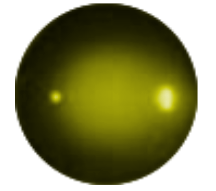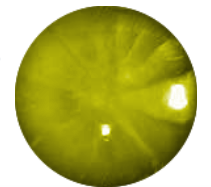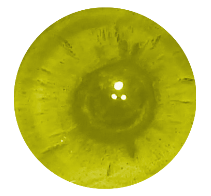Common types of Cataracts
What are the Common types of Cataracts
There are three primary types of age-related cataracts:
- nuclear sclerotic
- cortical
- posterior subcapsular
As a person ages, any one type, or a combination of any of these three types, can develop.
Nuclear Sclerotic Cataracts
Nuclear Sclerotic Cataract is the most common type of Cataract. As we age cataract the lens can harden and become more yellow and opaque.
"Nuclear" refers to the clouding of the central portion of the lens (nucleus) and "sclerotic" refers to the lens’ hardening.
Stages of Nuclear Sclerotic Cataracts
A Nuclear Sclerotic Cataract progresses slowly and can take years to develop.
As the development progresses Nuclear Sclerotic Cataract changes the eye's ability to focus. In some incidences reading and close vision can temporarily improve. This is referred to as "second sight," but unfortunately, this improvement is not permanent.



Cortical Cataracts
Cortical Cataract affects the white opacities, or cloudy areas, that develop in the outside edge of the lens cortex.
Changes in the water content of the lens fibres create fissures, that look like the spokes of a wheel pointing from the outside edge of the lens in toward the centre.
Effects of Cortical Cataracts
These fissures can cause the light that enters the eye to scatter, creating problems such as:
- blurred vision
- glare
- contrast
- depth perception
Who are at risk of Cortical Cataracts
People with diabetes are at an increased risk of developing cortical cataracts.
Posterior Subcapsular Cataracts
Posterior Subcapsular Cataracts begin as a small opaque or cloudy area on the back surface of the lens. The Cataract forms beneath the lens capsule, which is a small membrane that holds the lens in place.
Posterior Subcapsular Cataracts can develop quickly and symptoms can become noticeable within months.
Effects of Posterior Subcapsular Cataracts
Posterior Subcapsular Cataracts can
- interfere with reading
- create "halo" effects
- glare around lights
Who are at risk of Posterior Subcapsular Cataracts
People who are at increased risk for Posterior Subcapsular Cataracts include:
- steroid users
- diabetics
- the extreme nearsighted and patients with retinitis pigmentosa may develop this type of cataract.
Your Next Step
If you observe any eye changes or cloudy vision we can offer advice on a possible diagnosis, further investigations and suitable treatment.
We would advise that you see your general practitioner to obtain a referral to see one of our surgeons and arrange an appointment now for peace of mind.
We are specialist ophthalmic surgeons who are focused on conditions and treatments for the Cataracts and other eye problems.







